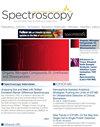利用交替最小二乘法和修正交替最小二乘法分析红外和拉曼成像数据
IF 0.8
4区 化学
Q4 SPECTROSCOPY
引用次数: 0
摘要
在分析红外和拉曼图像光谱数据时,修正交替最小二乘法(MALS)优于交替最小二乘法(ALS)。由于采用了脊回归技术,MALS 具有出色的稳定性,而且由于算法的核性质,MALS 在速度上具有很大的优势,从而减少了计算开销。MALS 在解析基向量方面表现出色,即使是信噪比低、近乎共线的数据也不例外,而 ALS 则往往达不到这一点。对于光谱成像,MALS 和其他 ALS 方法都依赖于样本成分之间的空间分辨率,因为低空间分辨率会导致成分混合增加。光谱成像结合了光谱学和数字成像技术来提取化学成分。多变量曲线分辨率 (MCR) 是 ALS 回归的基础,使其成为这种分析的重要工具,能够对复杂的光谱图像进行全面检查。本教程深入探讨了从红外和拉曼光谱图像中提取化学成分所需的数学技术。虽然讨论的重点是二维空间数据,但该方法可扩展到三维数据。本文章由计算机程序翻译,如有差异,请以英文原文为准。
Analysis of Infrared and Raman Imaging Data Using Alternating and Modified Alternating Least Squares
Modified alternating least squares (MALS) outperforms alternating least squares (ALS) in the analysis of infrared and Raman image spectral data. MALS offers superior stability thanks to ridge regression and a substantial speed advantage due to the kernel nature of the algorithm, reducing computational overhead. MALS excels in resolving basis vectors even in low signal-to-noise, nearly collinear data, whereas ALS often falls short. For spectroscopic imaging, both MALS and other ALS methods rely on spatial resolution between sample components, as low spatial resolution leads to increased mixing of components. Spectroscopic imaging combines spectroscopy and digital imaging to extract chemical composition. Multivariate curve resolution (MCR)’s foundation in ALS regression makes it a vital tool for this analysis, enabling a comprehensive examination of complex spectroscopic images. This tutorial delves into the mathematical techniques necessary for extracting chemical insights from infrared and Raman spectroscopic images. While this discussion focuses on two-dimensional spatial data, the methodology can be extended to three-dimensional data.
求助全文
通过发布文献求助,成功后即可免费获取论文全文。
去求助
来源期刊

Spectroscopy
物理-光谱学
CiteScore
1.10
自引率
0.00%
发文量
0
审稿时长
3 months
期刊介绍:
Spectroscopy welcomes manuscripts that describe techniques and applications of all forms of spectroscopy and that are of immediate interest to users in industry, academia, and government.
 求助内容:
求助内容: 应助结果提醒方式:
应助结果提醒方式:


